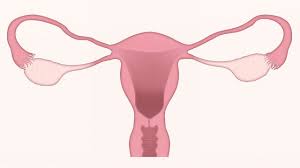As part of family planning, some women may opt for their fallopian tubes to be tied in a process known as tubal ligations. The decision to do this may not be easy, and it requires a careful decision. When you decide to undergo this process, you are sure you will not get pregnant. What if you change your mind? You can still get pregnant through a process called tubal reversal. A specialist of Santa Monica tubal reversal at California Center for Reproductive Health offers advanced medical procedures to have a baby again while ensuring that you have a quick recovery.
Who is an appropriate candidate for a tubal reversal?
If you would like your fallopian tubes to be untied so that you may have a baby again, you should consider whether you are an appropriate candidate. Some factors are considered before you undergo the tubal reversal process which include:
Age
Age is an essential factor when it comes to fertility. A tubal reversal has a high chance of 70% success rate for women under 35 years and 50 percent for those over 35. There is a low chance of 20-30% for those over 40 years old. Age can also bring other factors such as reduced egg reserve, early menopause, and ovulation issues that can minimize tubal reversal success.

Your general and reproductive health
Just like any surgical procedure, the rate of success is determined by your general health. Obese people with a basal metabolic index higher than 27 face difficulty during surgery. If you have ever had abdominal or gynecological surgery, it may cause other risks such as scarring.
Type of procedure
Most tubal ligations can be reversed. But the method used depends on the type of surgery. It is advised that you have your records of the tubal ligation procedure during your reversal process.
How is tubal reversal done?
Tubal reversal is usually done in an outpatient center; this means you will be treated and go home on the same day. During the procedure, your doctor will inject you with general anesthesia. This means that you will not feel any pain. Your specialist will then place a laparoscope around your belly button and the pelvis. This allows them to check the condition of the fallopian tube and decide whether to carry on with tubal reversal. If they decide to conduct it, an incision will be made in your pubic hairline. Your doctor will use a special instrument attached to the laparoscope to remove the rings used to tie your fallopian tube. They will then reconnect the fallopian tube to the uterus.
What is the success rate of pregnancy after reversal?
The success rate of your pregnancy depends on the health of fallopian tubes and fertility between you and your partner. If you do not have fertility issues and the remaining fallopian tubes are healthy, you will still be able to get pregnant. You should note that the success rate of tube reversal depends on age, type of procedure, and health. If you want to get pregnant again after undergoing tubal ligation, book an appointment with your doctor at California Center for Reproductive Health.
